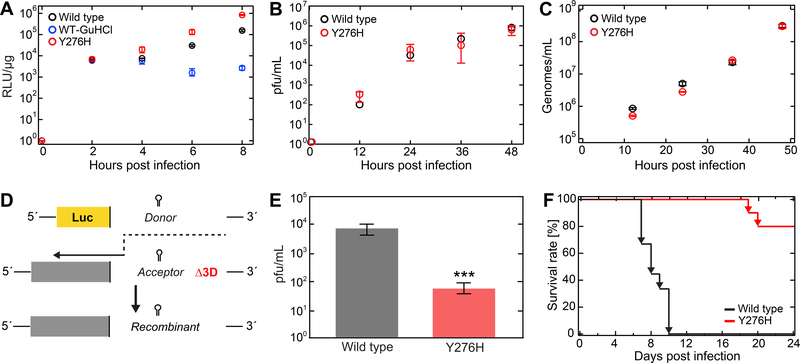Figure 2. EV-A71 Y276H RdRp variant exhibits significance decrease in recombination efficiency and virulence.
(A) Replication efficiency of the EV-A71 wild type (WT) and Y276H variant subgenomic replicons in RD cells as a function of time post transfection. GuHCl refers to the presence of guanidine hydrochloride, a potent inhibitor of replication. Luciferase activity is reported in relative light units (RLU; AVG±SD) per microgram of total protein (n = 3 replicates per time point). (B) EV-A71 WT (black) and Y276H variant (red) single-step growth curves (±SD; n = 3) confirm similar plaque formation. (C) EV-A71 WT (black) and Y276H variant (red) single-step growth curves (AVG ±SD; n = 3 for each time point). RD cells were infected with virus equivalent to 200 genomes/cell. Samples were taken at the indicated times and the genome amount of virus titer was quantified via RT-qPCR. (D) Cell-based recombination assay. EV-A71 C2-strain firefly luciferase-encoding sub-genomic replicon (donor) and full-length EV-A71 C2-MP4 strain genome (acceptor) carrying a lethal deletion of the 3Dpol region are co-transfected in RD cells. Only upon co-transfection can replication-competent virus be generated by RdRp-mediated template switch from donor to acceptor (indicated by dashed black arrow). (E) The Y276H mutation in the EV-A71 replicon inhibits recombinant yield. Resulting recombinant virus were quantified by pfu/ml (AVG±SD; n = 3). (F) EV-A71 C2-MP4 WT and Y276H virulence in hSCARB2 mice. 21-day old mice were orally inoculated with either WT or Y276H virus (n = 10 per virus) at a dose equivalent to 2×107 genomes and scored for survival post-infection. Effect of Y276H variant is severely attenuated relative to WT. Statistical analysis consisted of an unpaired, two-tailed t-test (significance level p: *** ≤ 0.001)

